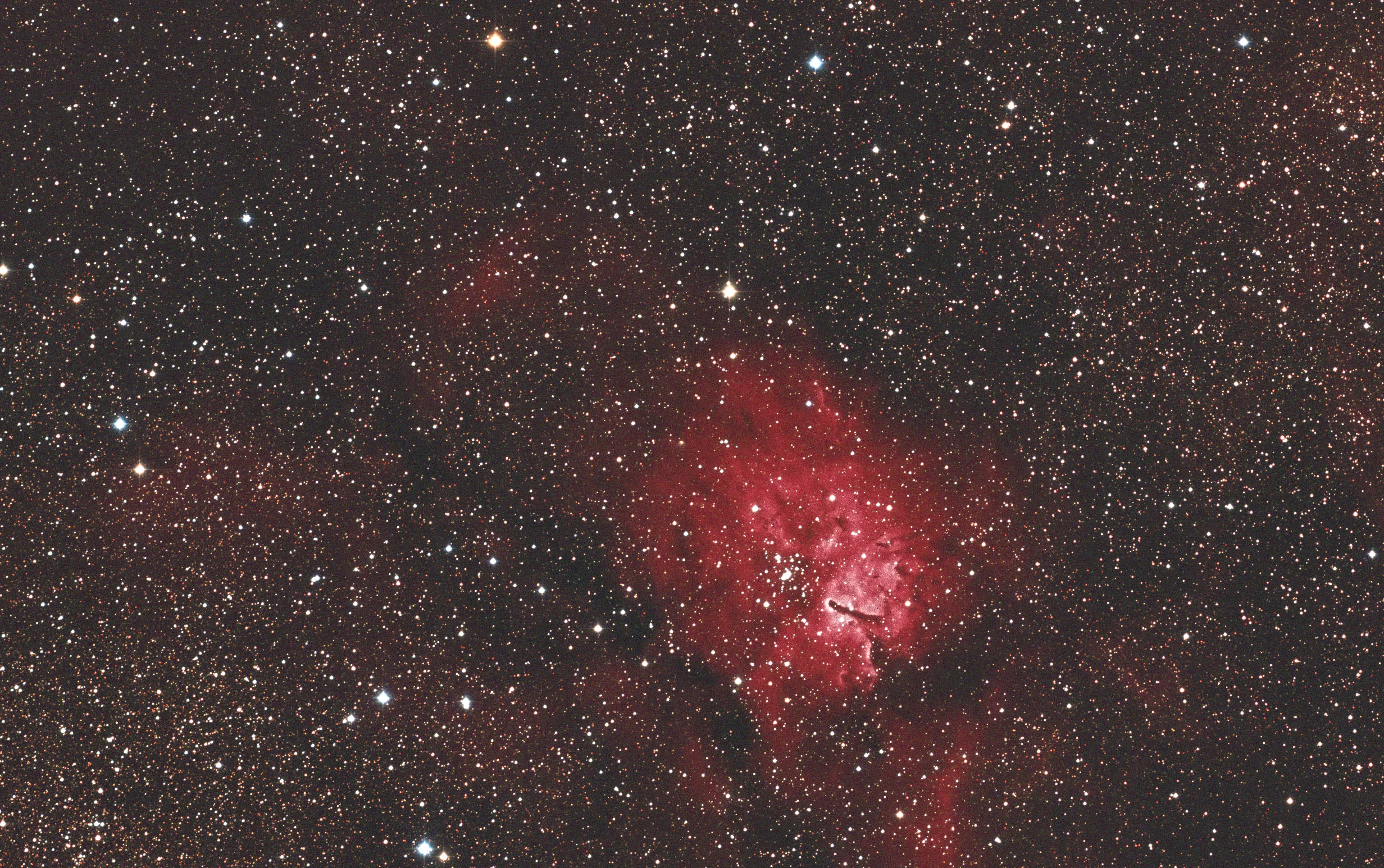
I don’t think we know nearly enough about the simplest things to be sure about anything. I was reminded of this when I looked over the data from this nebula. There’s not much to see when looking at it through the red, green, and blue (RGB) visible spectrum of light — or at least, not from this vantage point. An entirely different and vastly more detailed expanse became visible when I captured much longer exposures looking at just an extremely thin slice of the visible spectrum. We base so much of what we believe on what we can see; yet so much is intrinsically invisible to us.
This is where narrow-band filters that focus in on a particular wavelength of light come in to their own. Hydrogen-Alpha, a deep shade of red, is an intriguing wavelength to extract from the night sky. The filter is so narrow — it lets in so little light — that you can achieve over 30 minute exposures even in polluted skies. In fact, even when the moon is out, you can capture Hydrogen-Alpha (Ha) data without compromise.
The primary image seen at the top of this post is the combined Red, Green, Blue wide-band light combined with the Hydrogen-Alpha narrow-band light representing red. It was composited using the following data:
All imaging data was captured from the back patio of my townhouse in San Jose, 2015. The telescope used was a William Optics Star-71 — a beautiful little 5-element refractor for wide-field imaging — connected to a QSI683 camera on an Atlas EQ-6 mount.